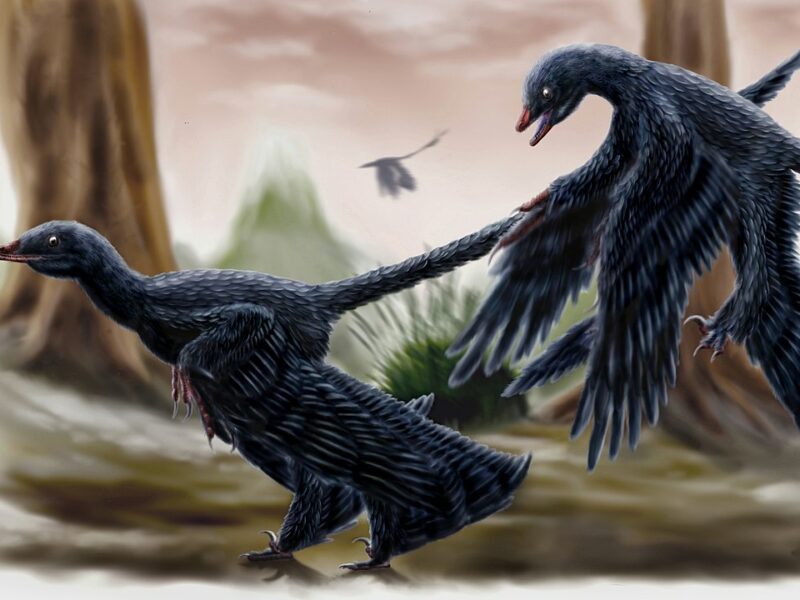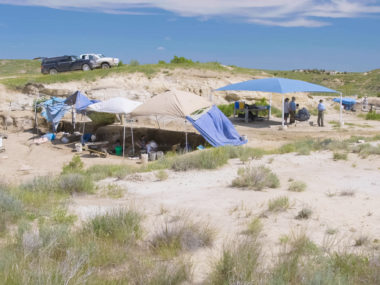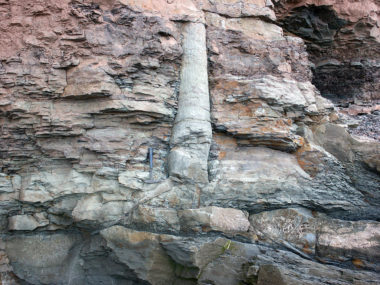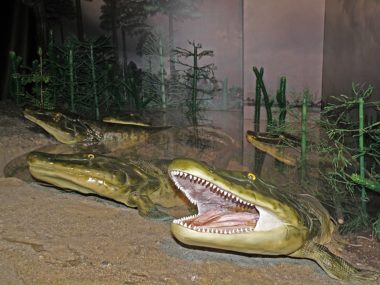Most secular scientists not only believe that the answer to this question is in the affirmative, they also claim that the evidence in support of this conclusion is beyond question. Those that champion the evolution of feathered flight from theropod dinosaurs typically rely on the fossil record to support most of their conclusions. This confidence in the fossil record has exploded in just the last 20 or so years with the discovery of exceptionally preserved examples of feathered theropods which supposedly close the transitionary gap between dinosaurs and birds (see figure). In this article, I am going to assume the validity of feathered dinosaurs. For those that want to investigate this particular issue a little further, then just follow the YouTube link at the bottom of the article which will take you to my YouTube channel where you will find a three-part series on this very subject.
The following article has been reblogged with permission from Creation Unfolding. The views expressed reflect those of the author, and not necessarily those of New Creation.
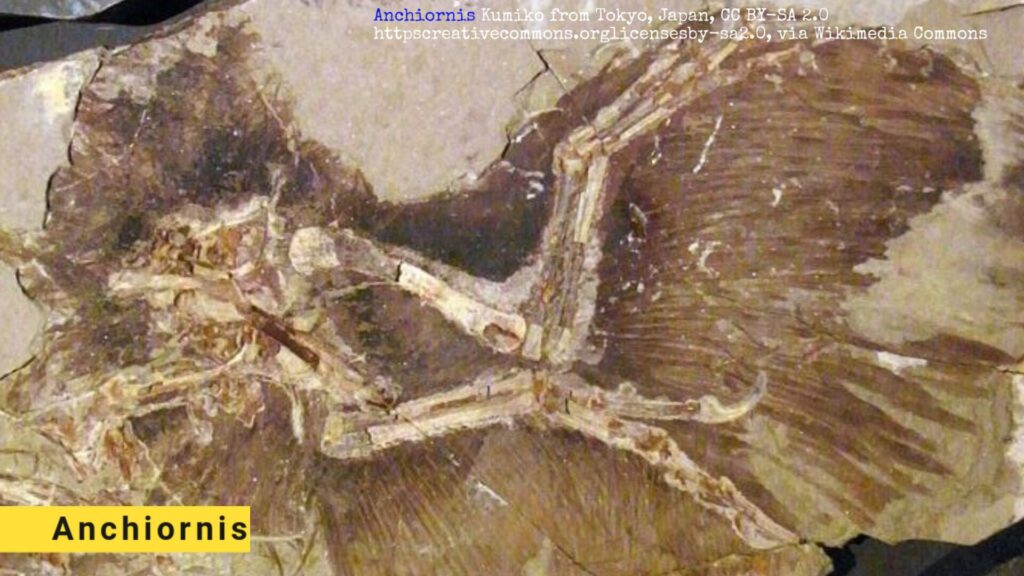
So, taking the fossil record at face value, just how compelling is the transitional nature of flight in theropod dinosaurs? Well, it all depends on how you interpret it. Take a slide from a recent Ted Ed YouTube documentary as an example (see second figure).1 The tree and branches in this frame depict the evolution of feathered flight from more primitive dinosaurs on the left to more advanced forms on the right, with modern birds appearing to the far right and top. From the left we have Sciurumimus, followed by Tyrannosaurus, then Sinosauropteryx, Caudipteryx, Microraptor, Anchiornis, Archaeopteryx, and then Confuciusornis, followed by modern birds. Notice also that the supposed evolution of flighted theropods is linked to the evolution of the feather, with simple, feather-like adaptations to the left and more derived or advanced adaptations to the right.
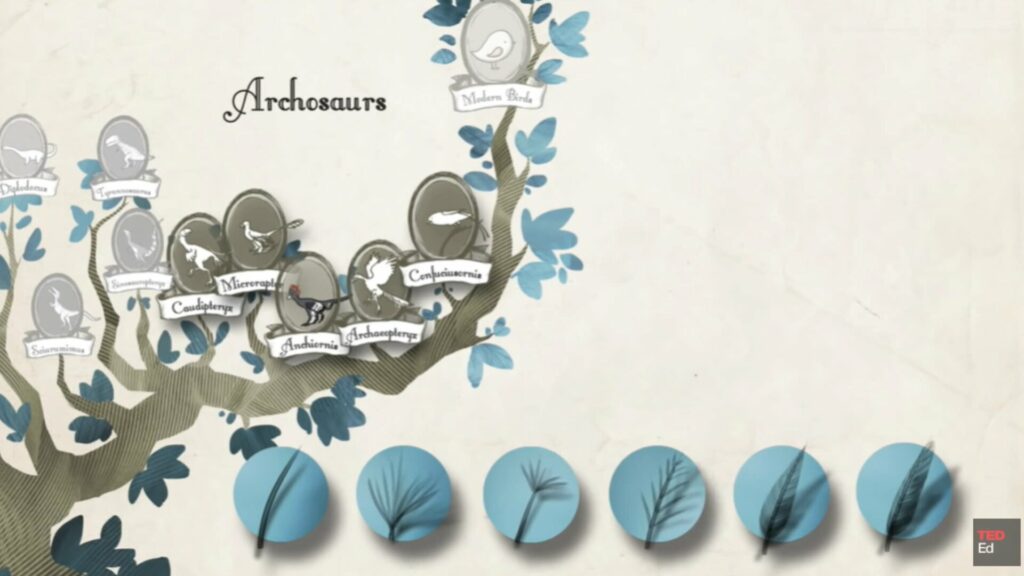
This general trend of more primitive to more derived or evolved feathered theropod dinosaurs is common fare in the public perception of feathered flight. Go to just about any website and/or social media platform and you’ll get the same general story. Even public education platforms are not immune from this general narrative, as the image on a recent PBS webpage demonstrates (see third figure).2 Again, we see the evolution of feathered flight depicted as a progression starting with more primitive theropods on the left and evolving to advanced forms on the right, with modern birds depicted at the very end. In this sequence we have Sinosauropteryx to the left, then Velociraptor, Unenlagia, Caudipteryx, Protoarchaeopteryx, Archaeopteryx, and Eoalulavis, and then modern birds. In this image, each example in the bottom diagram adds major adaptations and exaptations that progress towards powered flight to the right. The evolution of the wing itself is depicted in the top diagram. But, and here is the important question: Does this perception of the evolution of feathered flight actually accord with the fossil record?

In the figure below (the fourth figure), I have created a list of all the groups that belong to the clade Maniraptoriforms. This particular group includes all of the theropod dinosaurs that have pennaceous feathers and are, therefore, supposedly more related to birds than to more “primitive,” cursorial theropods. The vertical lines represent the range, through geologic time, that the groups supposedly lived. In other words, no members of these groups are found either before the bottom of the lines or above them. The names of each of the groups is colored to match its range and so is easy to identify. I’ve purposefully removed Avialae, which is the group that goes through till the present and contains what we typically think of when we use the word, “bird” in our everyday vernacular. My focus in this article is on the evolution of feathered flight, not of birds in general, so that means keeping things simple. I’ve also only included Mesozoic time in the geologic column. So, from a secular perspective, from 245 to 66 million years ago (keep in mind that as a young-age creationist, I believe the earth is only about 8000 years old). Let’s now use this diagram in conjunction with the Ted Ed and PBS diagrams, which themselves are representative of the broader perception within public education, to demonstrate that the gradual and sequential evolution of flight does, in fact, not accord with the fossil record.
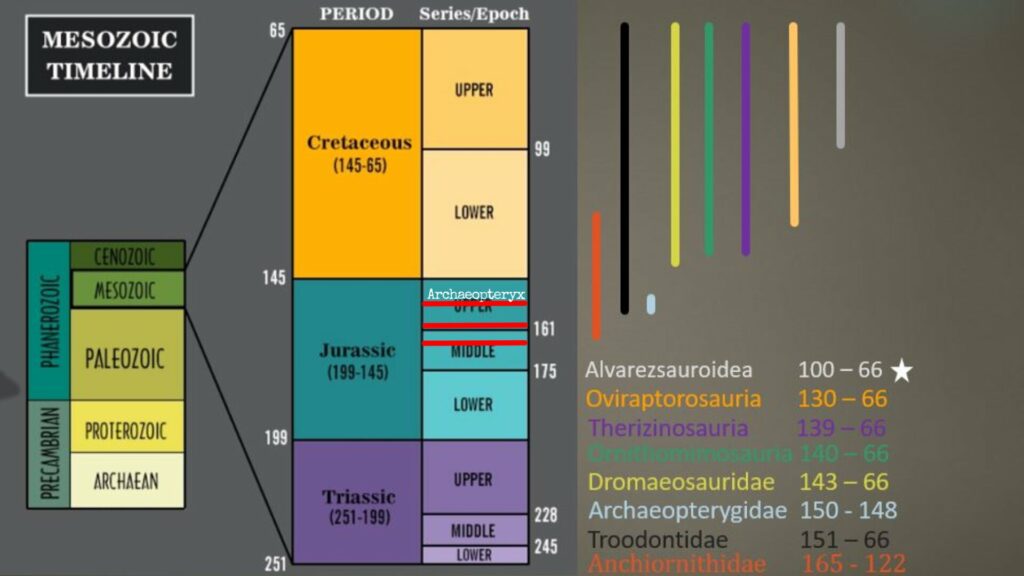
Notice in the Ted Ed diagram, that Archeopteryx is considered to be the most advanced feathered dinosaur before we get to Avialae (modern birds to the far right). Some palaeontologists even place Archeopteryx within Avialae, which would essentially be saying that it is a bird in the modern sense of the word. Archeopteryx had fully developed pennaceous feathers and was capable of powered flight; this means being able to produce lift under its own power. And of course, that would mean flapping its wings. Archaeopteryx’s fully developed pennaceous feathers, as depicted in the Ted Ed diagram, are indicative of a very advanced player in the evolution of flight. Multiple feathered lineages appear before Archaeopteryx and are depicted as more primitive theropods that hadn’t achieved this evolutionary status.
So, does this picture match what we find in the fossil record? Well, look back to the diagram that shows the range of all of the Maniraptoriform theropod groups (the fourth figure). Notice where Archaeopterygidae, the group that contains Archaeopteryx, is found in relation to all of the other groups. In terms of the evolution of flight all of the other groups in the chart are considered more primitive. Can you see the problem with this? Well, it means that almost all of the evolutionary groups that supposedly link primitive non-feathered theropods to Archaeopteryx, and whose ancestors are represented as having evolved before Archaeopteryx on the Ted Ed image, actually appear “above” Archaeopteryx in the fossil record. Apart from Antiornithidae, then, all of the data or evidence in support of the evolution of feathered flight is missing from where we would expect to find it in the fossil record: And that is below Archeopteryx.
This observation has not missed the attention of some evolutionary scientists. Paleontologist Alan Feduccia says:3
“It would not tax the imagination to engender a long list of obstacles for the now dominant model of a theropod origin of birds, including, but not limited to … the fact that the stratigraphic sequence of bird-like theropods has been almost the reversal of the expected evolutionary sequence leading to birds.”
Feduccia is a well-known, but rather disliked character in the paleontological world because of his belief that feathered theropods evolved from ancient reptiles called archosaurs, and not from dinosaurs. His opinion is, of course, irrelevant for our discussion here, but his observations are certainly telling.
OK, go back now and take a look at the PBS illustration. Notice that once again, Archaeopteryx appears in an evolutionary “advanced” position whereas all of these other groups are only links in the chain that supposedly show how feathered flight progressed. Yet as we’ve already seen, all of these other groups actually appear in the fossil record “above” Archaeopteryx (see my diagram). Towards the top of the PBS illustration, we are furnished with a very convincing sequence for the evolution of feathers and wings. Yet according to a strict “reading” of the geologic column, the very advanced Archeopteryx wing actually goes first in the sequence. There is almost no evidence for the evolution of the feathered wing before Archeopteryx in the geologic record.
Now, I did say that prior to Archaeopteryx, there was “almost” no evidence in the geologic record for the evolution of feathered flight. That’s because of the group, Anchiornithidae. Most important to our discussion are the specific examples of this family that occur in the fossil record prior to Archaeopteryx, of which there are only two, Eosinopteryx and Anchiornis. These two examples were found in strata that, from a conventional perspective, date to 160 million years ago for Eosinopterx and 163 million years ago for Anchiornis (red horizontal lines on the fourth diagram). That’s about 10 – 15 million years before Archaeopteryx (first red line). Until recently, neither of these taxa were considered capable of powered flight, even though both had pennaceous feathers.
Yet a paper published in 20204 tentatively claims that Anchiornis, the oldest known feathered therapod in the fossil record, might have been capable of powered flight after all. If this is accurate, this means that evolutionary transitions for feathered flight are completely and utterly absent from the fossil record prior to Anchiornis. Not a single fossil of a pennaceous feather has been found before this point in the fossil record. In one geologic moment you have ground-dwelling theropod dinosaurs like Sinosauropteryx, the next geologic moment you have pennaceous feathers and flight in all its glory. In a nutshell then, the nice evolutionary sequence we see in both the Ted Ed and PBS diagrams, and that is endorsed in just about every secular textbook on the evolution of the bird, is not supported by a strict sequential reading of the fossil record.
If the evolution flight in dinosaurs really did occur, one should expect to find a solid geologic record supporting this proposition. Yet not only are there problems with this assertion, from a strictly sequential reading of the fossil record any evidence supporting this assertion is completely and utterly missing. From a creationist perspective, there are still many unanswered questions, but it could be that the very real “sequence” we see “above” Anchiornis in the fossil record, may better reflect the secondary loss of flight in specially created flying theropod dinosaurs, and thus fits with a pre-Flood dinosaurian ecosystem that rapidly diversified and changed as a direct result of God’s curse on the biologic realm (Genesis 3:14).
Learn More About Feathered Dinosaurs
Footnotes
- Ted Ed video can be viewed at: https://www.youtube.com/watch?v=hPLgfGX1I5Y ↩︎
- PBS page and diagram can be viewed at: http://www.pbs.org/wgbh/evolution/library/03/4/l_034_01.html ↩︎
- Feduccia A, Lingham-Soliar T, Hinchliffe JR. Do feathered dinosaurs exist? Testing the hypothesis on neontological and paleontological evidence. J Morphol. 2005 Nov;266(2):125-66. doi: 10.1002/jmor.10382. PMID: 16217748. Page 2 ↩︎
- Pei R, Pittman M, Goloboff PA, Dececchi TA, Habib MB, Kaye TG, Larsson HCE, Norell MA, Brusatte SL, Xu X. Potential for Powered Flight Neared by Most Close Avialan Relatives, but Few Crossed Its Thresholds. Curr Biol. 2020 Oct 19;30(20):4033-4046.e8. doi: 10.1016/j.cub.2020.06.105. Epub 2020 Aug 6. PMID: 32763170.Did theropod dinosaurs evolve the ability to fly? ↩︎

